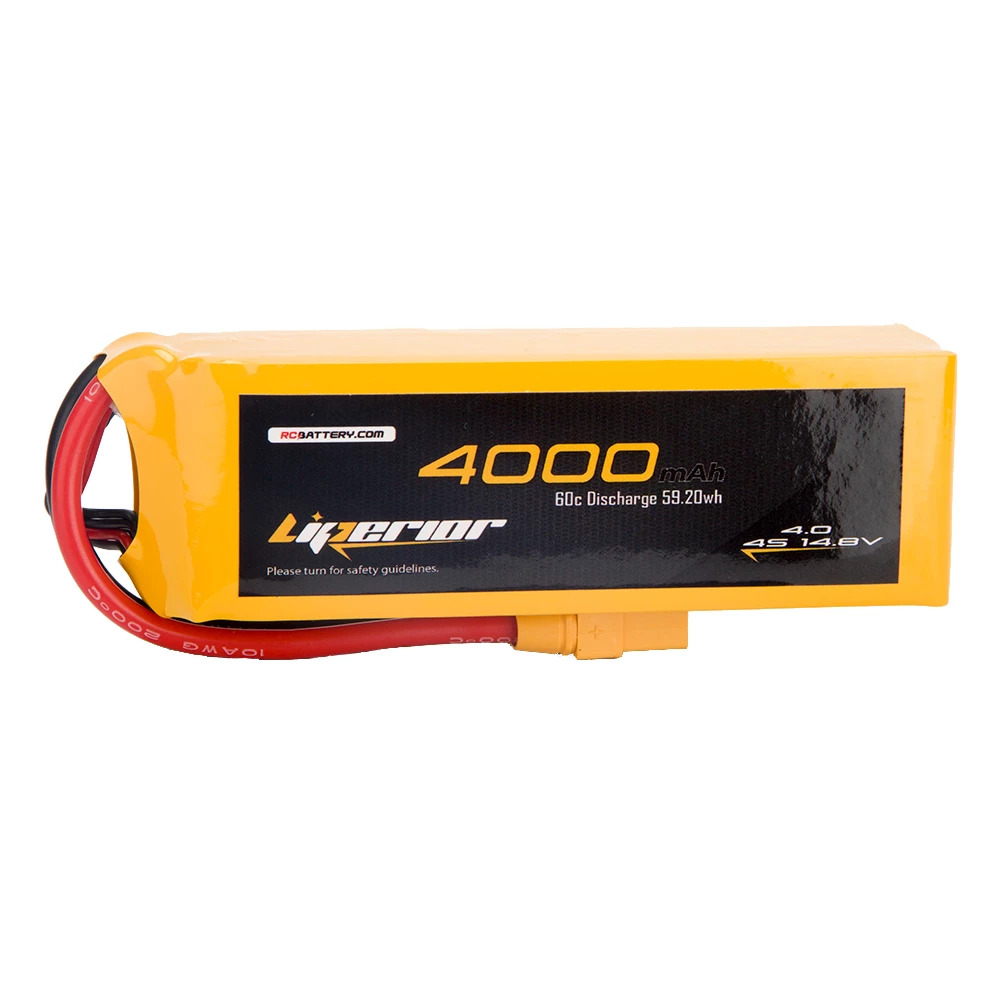Remote control (RC) cars offer enthusiasts a thrilling mix of speed, control, and customization. At the heart of these high-performance machines is one critical component: the battery. LiPo (Lithium Polymer) batteries have become the power source of choice for serious RC car users, but many drivers don’t fully understand the specifications that can make or break their car’s performance. In this article, we’ll walk you through the key specifications of LiPo batteries, helping you make informed choices for your RC car.
1. What is a LiPo Battery?
LiPo batteries have transformed the world of RC cars. Unlike older NiMH or NiCd batteries, LiPo batteries offer a lightweight design, higher power output, and a longer run time, which makes them the go-to option for anyone looking to maximize performance.
LiPo batteries are made of polymer electrolyte rather than a liquid electrolyte, which allows for more flexible shapes and sizes. They also have a higher energy density, meaning they can store more power in a smaller space. These characteristics make them perfect for powering RC cars, airplanes, drones, and other remote-controlled devices.
2. Key LiPo Battery Specifications to Know
Voltage (V): Powering Your Speed
The voltage of a LiPo battery is directly linked to the speed and power of your RC car. The voltage rating represents the electrical potential provided by the battery, with higher voltages offering greater speeds. Common LiPo batteries come in 2S (7.4V) and 3S (11.1V) configurations, where “S” stands for the number of cells in the battery connected in series.
A higher voltage results in more speed, but it’s essential to match the voltage with your RC car’s electronic components, such as the motor and ESC (Electronic Speed Controller). Over-voltage can damage these components, leading to costly repairs.
Example: If you want your RC car to move faster, a 3S battery will give you a speed boost compared to a 2S battery, but it must be compatible with your car’s electronics.
Capacity (mAh): Fueling Your Drive Time
Capacity, measured in milliamp-hours (mAh), determines how long your RC car can run before needing to recharge. A higher capacity battery can store more energy, allowing for longer run times. However, higher capacity often comes with increased weight, which can slightly reduce speed and agility.
Typical LiPo batteries range from 2000mAh to 6000mAh. The right capacity for your RC car depends on your usage. If you’re a racer, you may opt for a smaller, lighter battery to keep your car nimble. If you’re a casual driver, a larger capacity may be more beneficial for extended play.
Tip: Always balance capacity with weight—higher capacity batteries last longer but can make the car heavier, which might affect performance.
C-Rating: The Power You Can Draw
The C-rating indicates how quickly a LiPo battery can safely discharge its power. A higher C-rating means the battery can provide more energy in a short burst, which is crucial for high-speed racing and quick acceleration.
There are two types of C-ratings:
- Continuous C-Rating: This measures the battery’s ability to provide power over time without overheating.
- Burst C-Rating: This measures the maximum power the battery can discharge for short periods.
For high-performance RC cars, a higher C-rating (e.g., 30C or 50C) is ideal for delivering quick acceleration and power on demand.
Example: A 5000mAh battery with a 50C rating can provide a maximum current of 250 amps (5000mAh × 50C = 250,000mA or 250A), which is more than enough for most high-performance RC cars.
Cell Count (S): More Cells, More Power
LiPo batteries are made up of individual cells. Each cell provides about 3.7 volts of power. The number of cells in a battery pack is represented by the “S” rating. For instance, a 2S battery has two cells and provides 7.4 volts, while a 3S battery has three cells and provides 11.1 volts.
More cells equate to more power, but not all RC cars are built to handle higher cell counts. Before upgrading to a 3S or higher battery, ensure that your RC car’s motor and ESC can handle the increased voltage.
3. Choosing the Right LiPo Battery for Your RC Car
When selecting a LiPo battery for your RC car, there are several factors to consider:
- Check Your RC Car’s Specifications: Always consult your car’s manual to determine the compatible voltage, capacity, and C-rating. Using the wrong battery can cause overheating or component failure.
- Consider Your Driving Style: If you’re into off-road driving or bashing, you may need a higher C-rating for quick bursts of power. For casual driving, a moderate C-rating with higher capacity might be better suited.
- Balance Performance with Safety: While it may be tempting to go for the highest voltage and C-rating, you must ensure your car’s components can safely handle the power.
4. LiPo Battery Maintenance and Safety
To ensure long-lasting performance and safety, it’s essential to follow proper LiPo battery care techniques:
- Charging: Always use a charger specifically designed for LiPo batteries. Overcharging or using an incompatible charger can cause the battery to overheat or even catch fire.
- Discharging: Avoid fully discharging your LiPo battery. Most experts recommend stopping usage when the battery reaches about 3.7 volts per cell.
- Storage: Store your LiPo batteries at storage voltage (around 3.7 volts per cell) in a cool, dry place. Avoid leaving fully charged or discharged batteries in storage for extended periods.
Tip: Use a LiPo-safe charging bag to contain any possible fires or explosions during charging.
5. Common Mistakes to Avoid
- Using the Wrong Charger: Always use a LiPo-specific charger. NiMH or NiCd chargers are incompatible and dangerous for LiPo batteries.
- Ignoring C-Rating: Using a low C-rating battery in a high-performance car can lead to poor performance and overheating. Ensure the battery’s C-rating matches your driving demands.
- Over-discharging: Allowing a LiPo battery to discharge below 3.2V per cell can damage the battery permanently. Use a voltage alarm to monitor levels during use.
Conclusion
In the world of RC cars, LiPo batteries are a game-changer. By understanding essential specifications such as voltage, capacity, C-rating, and cell count, you can significantly enhance your car’s performance and extend its lifespan. The right LiPo battery will give you the power, speed, and endurance you need—whether you’re a casual enthusiast or a competitive racer. Remember, always prioritize safety and follow best practices to get the most out of your battery.
FAQs
1. What does a 2S or 3S battery mean?
- A 2S battery has two cells in series and delivers 7.4 volts, while a 3S battery has three cells and delivers 11.1 volts. Higher “S” ratings offer more power but require compatible RC car electronics.
2. Can I use a LiPo battery with a higher capacity?
- Yes, you can use a higher-capacity LiPo battery for longer run times, but be mindful that higher capacity often means additional weight, which can impact your car’s speed and agility.
3. What is the difference between continuous and burst C-rating?
- Continuous C-rating indicates how much power the battery can safely provide over time, while burst C-rating refers to short bursts of higher power, useful during acceleration or quick speed changes.
4. How do I properly dispose of a LiPo battery?
- LiPo batteries should be discharged completely and disposed of at a battery recycling facility. Never throw them in household trash due to potential fire hazards.
5. Is it safe to store LiPo batteries fully charged?
- No, LiPo batteries should be stored at around 3.7 volts per cell. Storing them fully charged or discharged can lead to swelling or reduced battery life.



